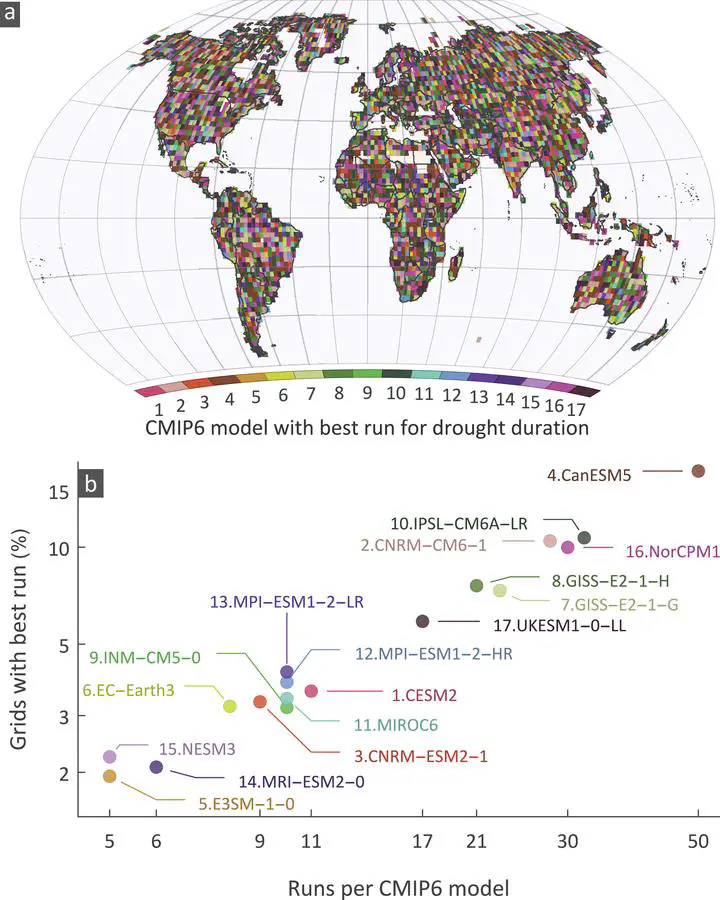Probabilistic Evaluation of Drought in CMIP6 Simulations
 Spatial variability of CMIP6 models corresponding to the best performing run, and relationship between the number of CMIP6 runs per model and the average percentage of grids where runs of the model perform best.
Spatial variability of CMIP6 models corresponding to the best performing run, and relationship between the number of CMIP6 runs per model and the average percentage of grids where runs of the model perform best.Abstract
Droughs have widespread social and ecological impacts and thus it is critical to develop long-term adaptation and mitigation strategies to reduce drought vulnerability. Climate models are important in quantifying drought changes, yet their simulations are often biased. In this study, we assess the ability of climate models to reproduce observed drought characteristics at the global scale based on a probabilistic framework. Results show that many simulations reproduce well the properties of observed droughts. In most regions the probability distributions describing drought duration and severity in observations and simulations are similar. No single model can be considered as the best over the globe, yet models with more simulations perform better in more regions. The variance in drought statistics among the simulations is higher in the tropics compared to other geographical zones. The study emphasizes the need to rigorously evaluate climate models and identify those that agree with observations.